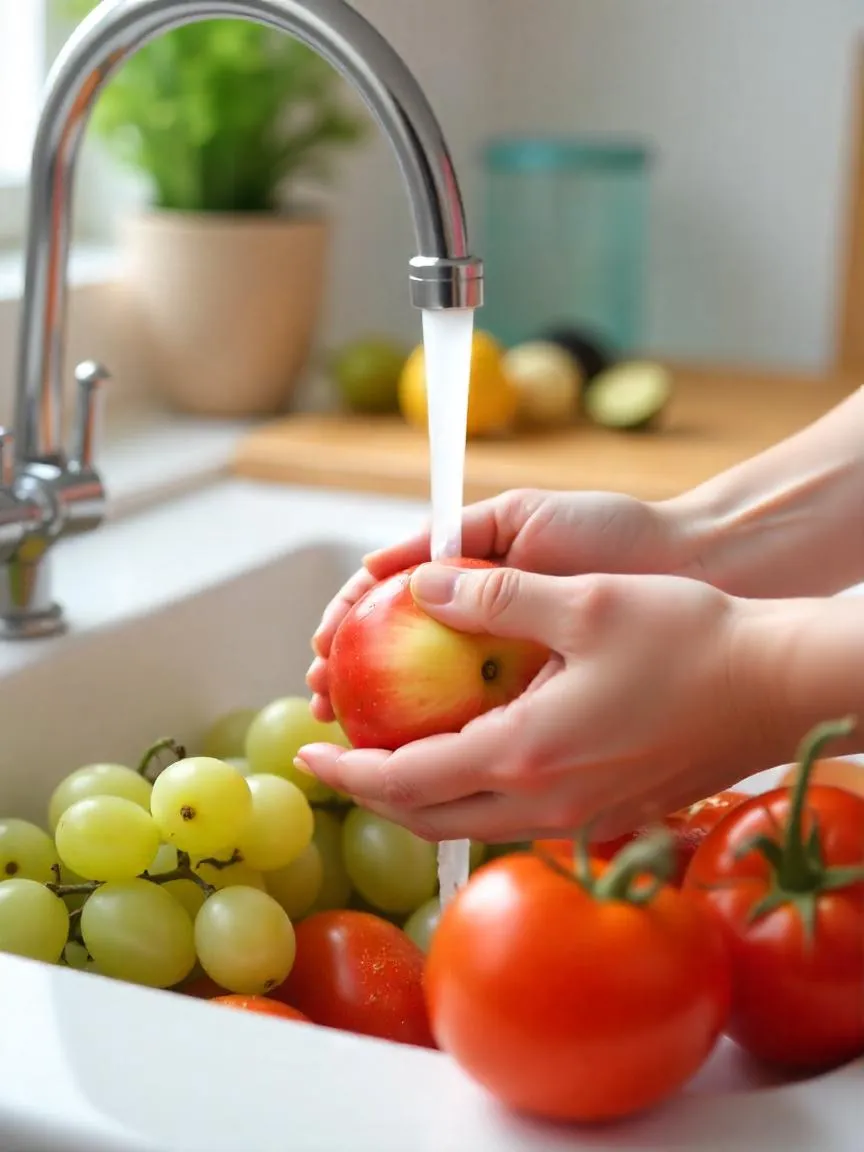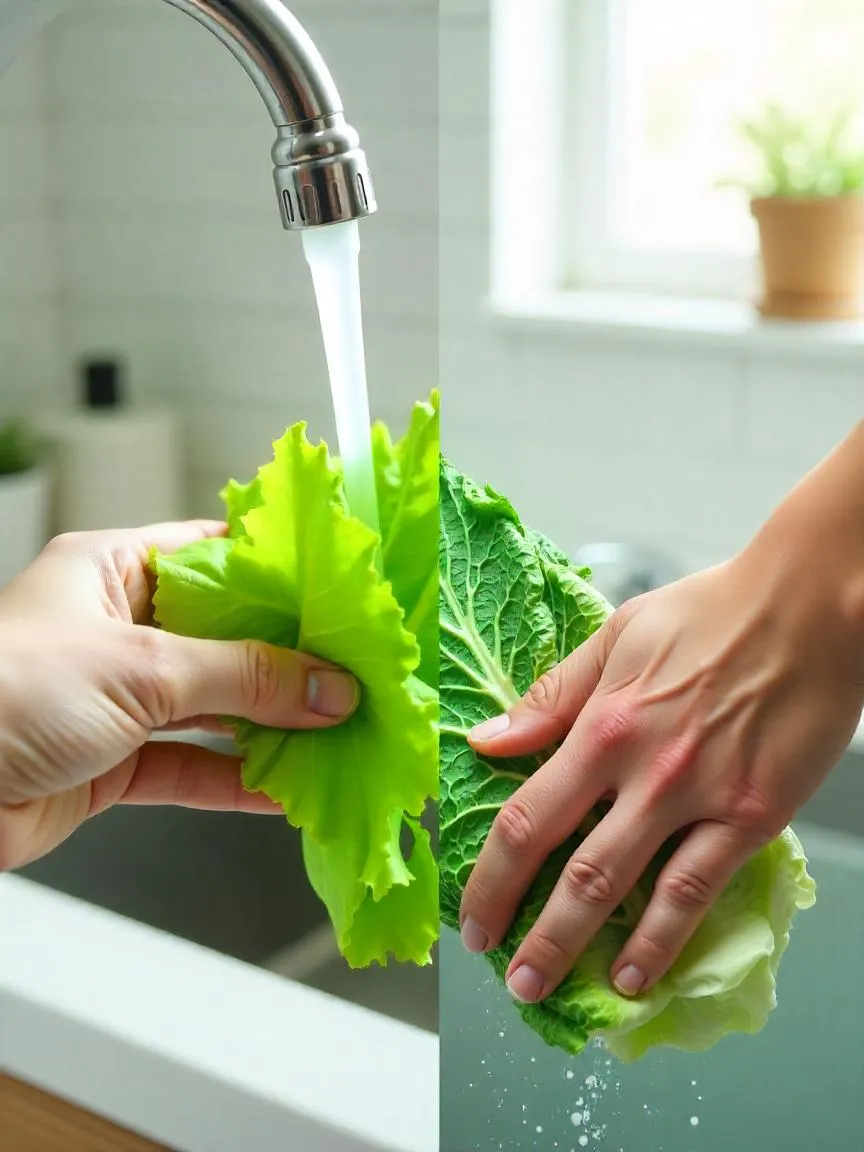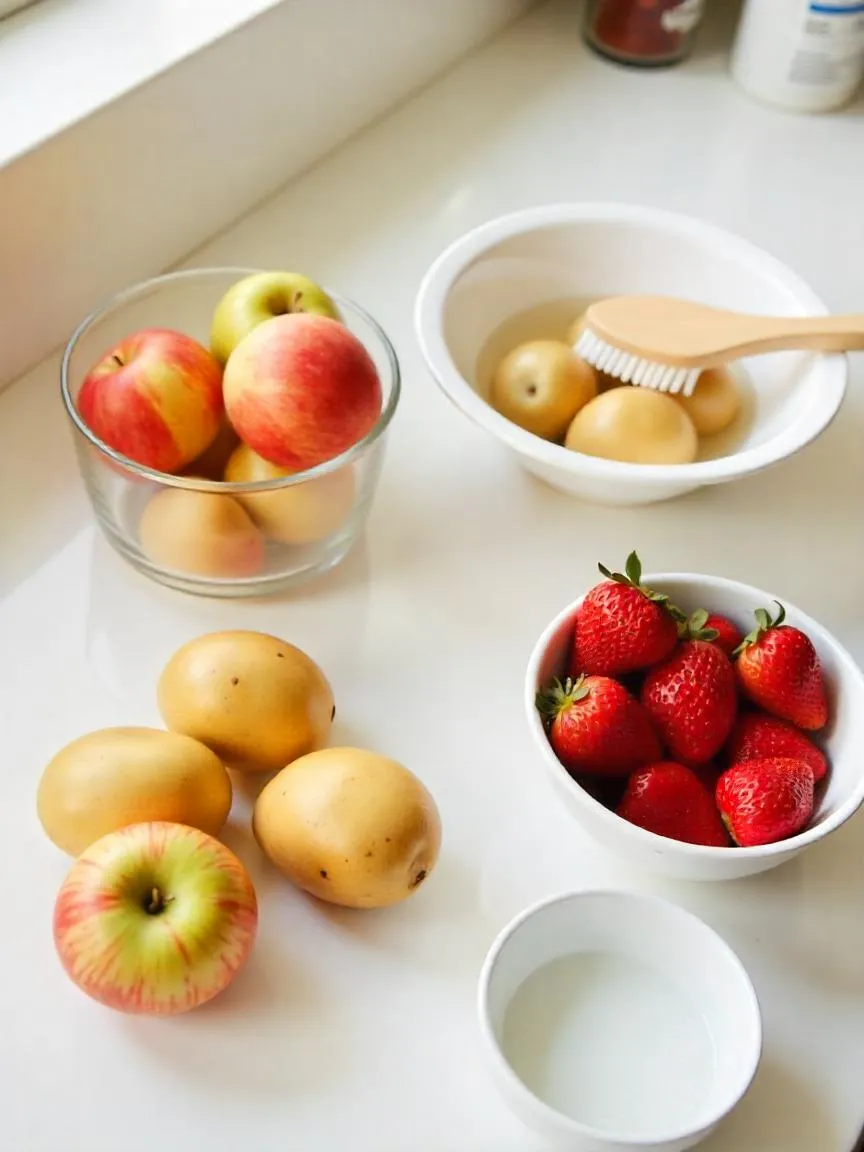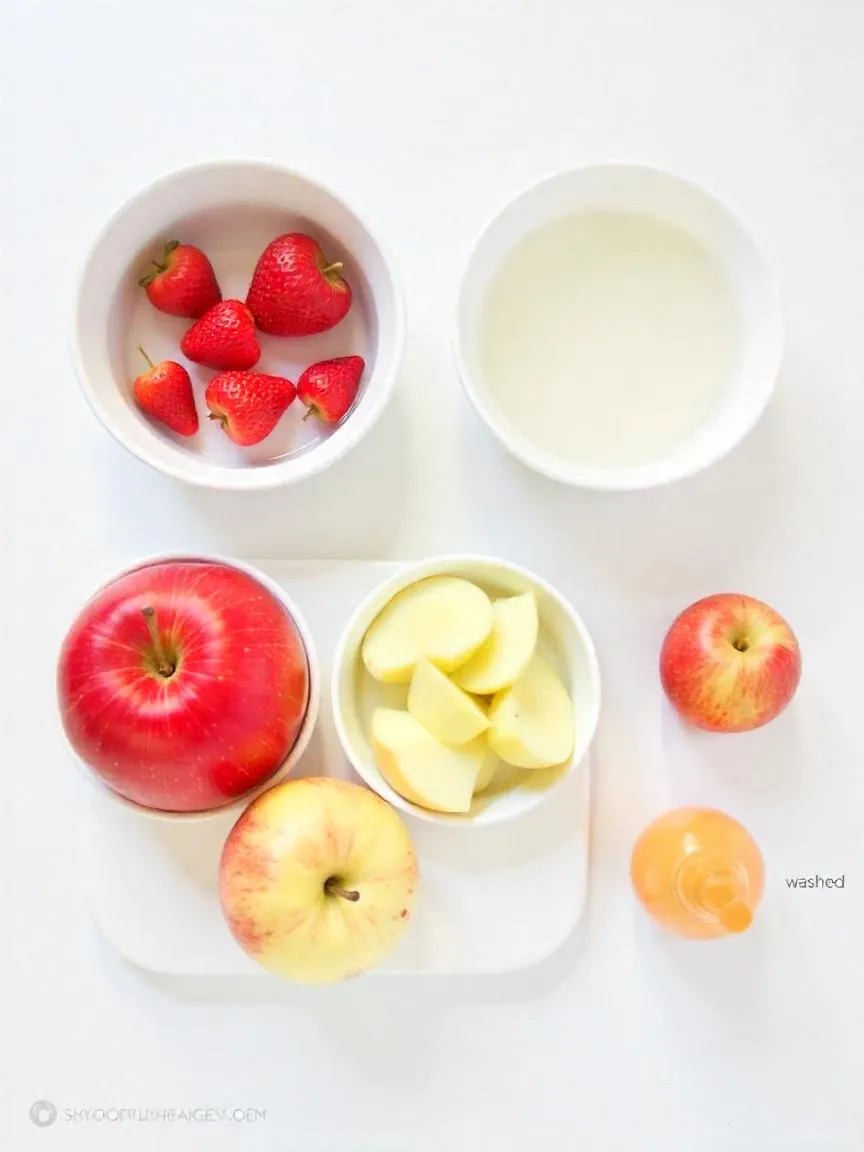When it comes to food safety, one question pops up again and again:
Is rinsing produce with water really enough to remove dirt, germs, and pesticides?
The short answer is: yes — in most cases, plain cold water does the job surprisingly well. No need for fancy fruit washes, chemical sprays, or special soaps. With the right technique, tap water alone can remove the majority of surface contaminants, making your fruits and veggies safe to eat.

But here’s the catch: how you wash produce matters. Different types of fruits and vegetables benefit from different washing methods. Berries need gentle handling, leafy greens require a little extra attention, and firm produce like apples can take a quick scrub.
This article breaks down:
Why water works
When (and if) natural or store-bought washes are worth using
How to clean different types of produce the right way
Common myths about produce cleaning
With these tips, you’ll feel confident your food is truly clean — no chemicals required.
Is Plain Water Enough to Clean Your Fruits and Veggies? Here’s What Science Says

Many people rely on a quick rinse under the tap to clean their produce — but is that really enough to remove dirt, germs, and pesticides?
For most everyday fruits and vegetables, the answer is: yes, plain water is surprisingly effective. Cold, running water can remove a large portion of surface dirt, bacteria, and even some pesticide residues, especially when combined with gentle rubbing or light scrubbing.
However, water does have its limits — especially when dealing with:
- Produce that has rough or porous skin, like cantaloupes or strawberries
- Items that grow close to the ground, like lettuce or spinach
- Fruit with deep crevices, such as cauliflower or broccoli
These types of produce can trap contaminants in hard-to-reach places. While water helps, it may not eliminate every microbe or chemical particle.
💧 How Water Actually Works
Here’s why water alone works better than you might think:
- 🌊 Rinsing under cold, running water physically flushes away dirt and microbes
- 🖐️ Gently rubbing the surface loosens grime and pesticide residues
- 🍎 Smooth-skinned fruits like apples, grapes, and tomatoes clean easily with just water
- 🥣 Soaking in a clean bowl can help loosen stubborn debris — but be sure to rinse again under running water afterward, so contaminants don’t settle back on the food
In short: water is often all you need — if you use it correctly.
🧪 Is Water Enough? Limitations & What Science Really Says
While plain water does a solid job removing many contaminants, it’s not a miracle solution — especially when it comes to deep crevices, sticky pesticide residues, or invisible bacteria.
⚠️ What Water Can’t Do: The Hidden Gaps
- Textured produce like broccoli, lettuce, or cauliflower often hides dirt in tiny folds or tight spaces. A simple rinse may leave particles behind that water can’t flush out.
- Water doesn’t kill bacteria — it only helps rinse them off. Harmful pathogens like Salmonella and E. coli may still cling to surfaces, especially if the produce is bruised or damaged.
- Persistent pesticide residues can resist water, particularly non-water-soluble chemicals used in conventional farming. These may require scrubbing, peeling, or soaking to reduce.
🔬 What Studies Show About Washing Produce with Water
✅ Good news:
Multiple food safety studies confirm that rinsing fruits and vegetables under cold running water removes 90–99% of surface bacteria — especially when you gently rub or brush the produce.
📊 A study published in Food Control Journal showed that water alone removed significant levels of bacteria on common produce like tomatoes and apples — with little added benefit from commercial produce washes.
📚 Another research review found that mechanical action (rubbing/scrubbing) was often more important than the cleaning agent used — reinforcing that your hands or a soft brush are more powerful than special soap.
✅ Bottom Line:
Water works — but with care. To boost its effectiveness:
- Rub or scrub when the texture allows
- Soak leafy greens, then rinse
- Peel or cook high-risk produce when needed
- Don’t rely on water to “sterilize” — it’s a rinse, not a disinfectant
🧼 Other Ways to Clean Produce: When Water Isn’t Quite Enough

While cold running water does a great job for most fruits and vegetables, there are times when a little extra effort can go a long way — especially with conventionally grown or heavily treated produce.
🕵️♀️ When Should You Use More Than Just Water?
Some fruits and vegetables are harder to clean because of:
- Waxy coatings (e.g., apples, cucumbers)
- Thick or bumpy skins (e.g., potatoes, squash)
- Deep crevices or layered leaves (e.g., broccoli, lettuce)
- Visible dirt on root vegetables like carrots or beets
In these cases, water alone may not remove all pesticide residue, bacteria, or soil. That’s where natural cleaning boosters — like vinegar, baking soda, or gentle scrubbing — come in handy.
👨👩👧👦 Who Might Benefit from Extra Cleaning?

- People with weakened immune systems (young children, elderly, pregnant women)
- Anyone who’s extra cautious about chemical exposure
- Those eating a lot of raw produce where cooking won’t eliminate potential germs
- People concerned about conventional pesticides, especially on the “Dirty Dozen” list
For organic, homegrown, or well-sourced local produce, water alone is usually sufficient. But when you’re not sure what your produce has been exposed to, a few extra cleaning steps can bring peace of mind.
💡 Bottom Line:
Water is effective for daily use, but it’s not a one-size-fits-all.
Use scrubbing, soaking, or natural rinses when you’re dealing with:
- Dirt that won’t budge
- Waxy coatings
- Heavily handled store produce
These simple tweaks can help ensure your food is as clean — and safe — as possible.
🍋 Natural vs. Store-Bought: Which Produce Cleaner Works Best?
You’ve probably heard that vinegar, baking soda, or commercial fruit washes can help clean produce more effectively. But how do these options really stack up — and are they worth using over plain water?
🧪 Real-Life Comparison: What Studies Say
In a study examining strawberries treated with various methods (water rinse, hot water, vinegar, baking soda, and commercial washes), results showed:
- Vinegar removed some bacteria and visible grime but often left behind a noticeable taste or smell
- Baking soda was highly effective at reducing pesticide residue, especially on firm-skinned fruits like apples
- Commercial fruit washes didn’t outperform basic methods like water or baking soda, despite marketing claims
📊 At-a-Glance Comparison Table
| Cleaning Agent | Effectiveness | Notes |
|---|---|---|
| Vinegar | Moderate bacteria removal | May leave taste or odor on produce |
| Baking Soda | Breaks down pesticides well | Gentle, flavor-neutral, safe to use |
| Commercial Washes | Similar to water or baking soda | Expensive, few proven benefits |
✅ What’s Best for You?
- For daily use, water with gentle rubbing or a soft brush is often enough
- Use baking soda soaks (1 tsp per 2 cups of water, 15 min) for apples, cucumbers, or other thick-skinned fruits
- Try vinegar (1:3 with water) if you’re concerned about surface bacteria — just rinse well after to remove odor
- Commercial washes? Optional. They may add convenience, but science doesn’t back a major advantage





Good to know! I always wondered about those special produce washes. Thanks for the tips, especially about berries – I tend to squish them.